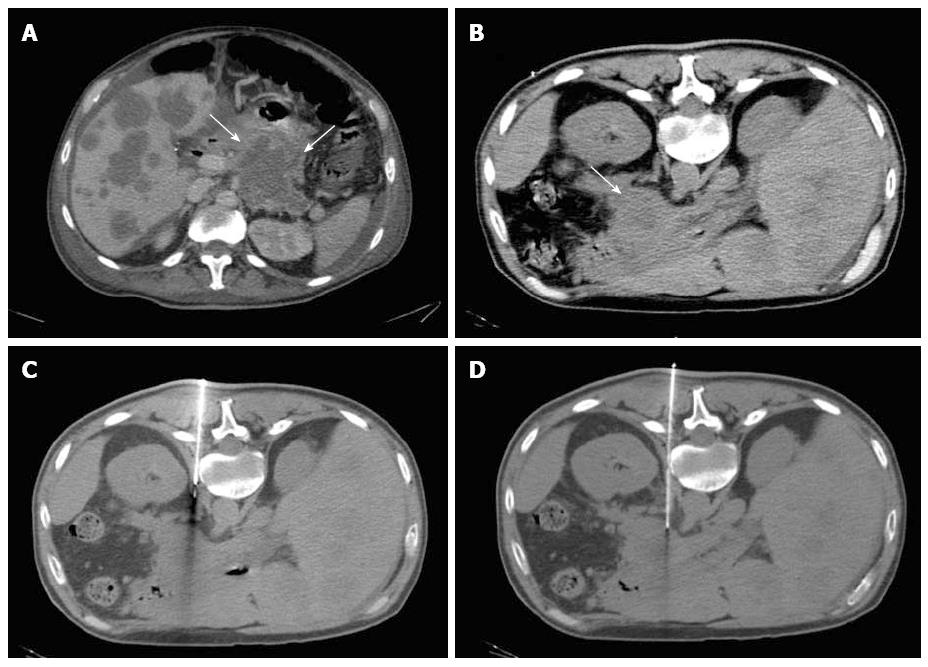Copyright
©The Author(s) 2015.
World J Gastroenterol. Mar 28, 2015; 21(12): 3579-3586
Published online Mar 28, 2015. doi: 10.3748/wjg.v21.i12.3579
Published online Mar 28, 2015. doi: 10.3748/wjg.v21.i12.3579
Figure 2 Percutaneous computed tomography-guided core needle biopsy of a pancreatic lesion using hydrodissection.
A: Contrast-enhanced computed tomography (CT) showing an expansive lesion in the tail of the pancreas (arrows). An anterior approach was considered difficult because of the interposition of the intestine in the supine position, therefore, a posterior approach was used; B: Non-enhanced axial CT of the upper abdomen in the prone position showing a lesion located in the tail of the pancreas (arrow); C: Coaxial needle (17 G) positioned in the pillar of the diaphragm, where saline solution was injected to enlarge the paravertebral space, enabling an unobstructed needle path; D: Biopsy needle (18 G) placed adjacent to the pancreatic lesion.
- Citation: Tyng CJ, Almeida MFA, Barbosa PN, Bitencourt AG, Berg JAA, Maciel MS, Coimbra FJ, Schiavon LHO, Begnami MD, Guimarães MD, Zurstrassen CE, Chojniak R. Computed tomography-guided percutaneous core needle biopsy in pancreatic tumor diagnosis. World J Gastroenterol 2015; 21(12): 3579-3586
- URL: https://www.wjgnet.com/1007-9327/full/v21/i12/3579.htm
- DOI: https://dx.doi.org/10.3748/wjg.v21.i12.3579









